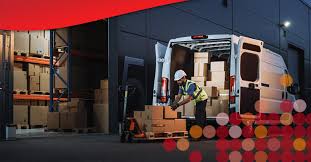Importance of Last-Mile Delivery in Maintaining an Efficient Supply Chain
In today’s world of e-commerce and on-demand services, last-mile delivery has emerged as a crucial component of the supply chain. As businesses strive to meet increasing customer expectations for faster and more convenient deliveries, optimizing the last-mile process has become a priority. This blog explores what last-mile delivery is, why it is essential for a smooth supply chain, and how businesses can enhance efficiency in this final stage of logistics.
What is Last-Mile Delivery?
Last-mile delivery refers to the final step of the logistics process where goods are transported from a distribution center or fulfillment hub to the end customer. It is called the “last mile” because it represents the final leg of the journey before a package reaches its destination, whether it’s a residential address, a retail store, or a business location. While this stage might seem like a small part of the entire logistics chain, it is often the most challenging, expensive, and time sensitive.
The success of last-mile delivery directly impacts customer satisfaction, making it a critical factor for retailers, logistics providers, and e-commerce businesses. With same-day and next-day delivery becoming industry standards, businesses must find innovative ways to optimize last-mile logistics to stay competitive.
How Last-Mile Delivery Helps Maintain the Supply Chain
The supply chain is a complex network that involves procurement, warehousing, transportation, and final delivery. Last-mile delivery plays a vital role in ensuring the smooth functioning of the supply chain by addressing the following key areas:
1. Enhances Customer Satisfaction
Customers today expect fast, reliable, and convenient delivery services. Efficient last-mile delivery ensures that products reach customers on time, improving customer experience and building brand loyalty. Businesses that can meet or exceed delivery expectations gain a competitive advantage in their respective industries.
2. Reduces Transit Time
By streamlining last-mile delivery operations, businesses can reduce transit times and minimize delivery delays. Advanced route optimization, real-time tracking, and predictive analytics enable logistics providers to make quicker and more informed decisions, ensuring timely deliveries.
3. Improves Operational Efficiency
The last-mile stage of delivery is often associated with inefficiencies, such as traffic congestion, failed deliveries, and high fuel consumption. Implementing smart logistics solutions, such as automated dispatching and GPS tracking, enhances operational efficiency, reducing wasted time and resources.
4. Supports E-commerce and Retail Growth
With the rise of e-commerce, the demand for last-mile delivery has increased significantly. Businesses that invest in last-mile logistics can expand their reach, offer same-day delivery options, and cater to a broader customer base. This is particularly important for online retailers competing with giants like Amazon, which have set high delivery expectations for consumers.
5. Lowers Logistics Costs
Last-mile delivery can be expensive, accounting for up to 53% of total shipping costs. However, through better route planning, localized distribution centers, and innovative delivery methods such as drone deliveries or electric vehicles, businesses can cut down on transportation expenses and improve profit margins.
Challenges of Last-Mile Delivery
Despite its benefits, last-mile delivery presents several challenges that businesses must address to maintain efficiency in the supply chain:
- High Costs: Fuel expenses, labor wages, and infrastructure investments make last-mile delivery expensive.
- Traffic Congestion: Urban areas with heavy traffic can lead to delays, increasing delivery time and costs.
- Failed Deliveries: Customers not being available at the delivery location can lead to reattempts, adding to operational costs.
- Lack of Real-Time Visibility: Without proper tracking systems, businesses may struggle to monitor deliveries and address issues proactively.
Innovations in Last-Mile Delivery
To overcome these challenges, businesses are embracing technology-driven innovations that improve last-mile logistics:
- AI-Powered Route Optimization: Artificial intelligence helps logistics providers analyze real-time traffic patterns and optimize delivery routes for speed and efficiency.
- Drones and Autonomous Vehicles: Some companies are testing drone deliveries and self-driving delivery robots to reduce costs and speed up last-mile logistics.
- Smart Lockers: Secure, automated lockers placed in convenient locations allow customers to pick up their packages at their convenience, reducing failed deliveries.
- Crowdsourced Delivery Models: Businesses are leveraging gig economy workers, similar to Uber or DoorDash, for faster and more flexible delivery options.
How Businesses Can Optimize Last-Mile Delivery
For businesses looking to improve last-mile delivery efficiency, here are some key strategies:
- Invest in Technology: Use GPS tracking, AI-driven route planning, and real-time delivery updates to enhance visibility and efficiency.
- Utilize Local Distribution Centers: Setting up micro-fulfillment centers closer to customers reduces delivery times and transportation costs.
- Adopt Sustainable Delivery Practices: Incorporating electric vehicles, bike deliveries, and optimized logistics can lower emissions and operational costs.
- Enhance Customer Communication: Providing real-time delivery updates, flexible time slots, and easy rescheduling options improves customer satisfaction.
- Leverage Data Analytics: Analyzing past delivery trends and customer preferences helps in making data-driven decisions to enhance logistics performance.
Conclusion
Last-mile delivery is an integral part of the supply chain, ensuring that goods reach customers efficiently and on time. As customer expectations continue to evolve, businesses must invest in technology, sustainable solutions, and innovative logistics strategies to optimize last-mile delivery operations. By addressing challenges and implementing smart solutions, businesses can enhance supply chain efficiency, reduce costs, and improve overall customer experience.
With the rapid growth of e-commerce and urban logistics, last-mile delivery will continue to be a game-changer in supply chain management. Companies that prioritize last-mile optimization will not only stay competitive but also set new standards in the logistics industry. As businesses navigate the future of logistics, a well-structured last-mile strategy will be key to driving success and long-term growth.







